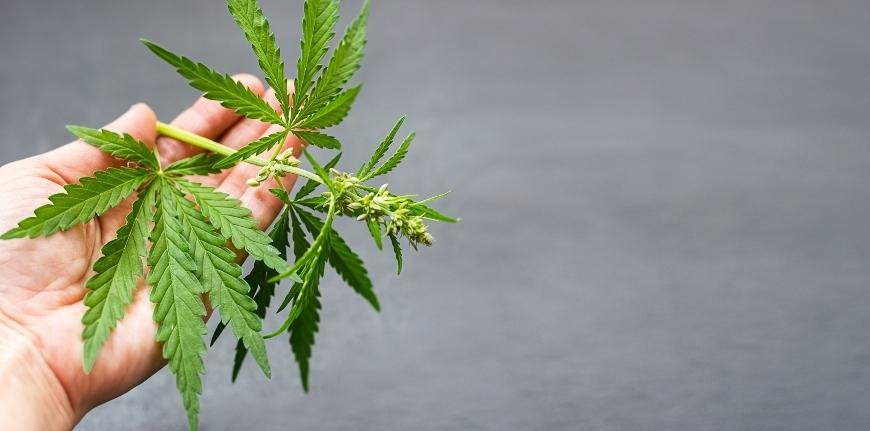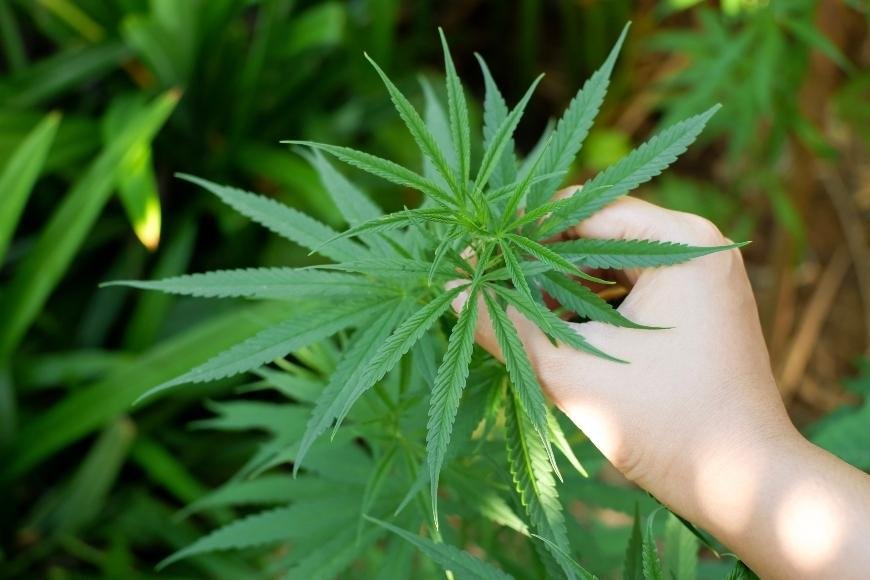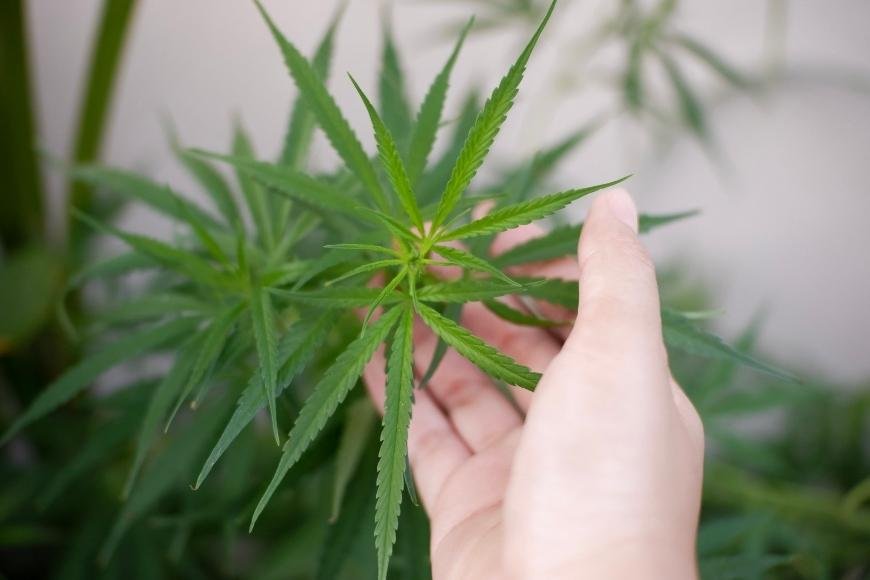Topping Cannabis Plants: How To
Discover the secrets of topping cannabis plants: how to maximize growth and yield with our step-by-step guide, tips, and aftercare for healthy plants.

Mastering the art of topping cannabis plants is essential for those looking to maximize their yield and cultivate a healthy, thriving garden. In this comprehensive guide on "Topping Cannabis Plants: How to," we will delve into the intricacies of this crucial technique, providing you with all the information needed to successfully top your marijuana plants.
From understanding what topping entails and its numerous benefits, to identifying common mistakes that can hinder plant growth, our in-depth discussion will cover every aspect of this process. Furthermore, we'll explore when it's best to top your cannabis plant by examining factors such as node count and growth stage.
In addition to these insights, our step-by-step instructions on how to properly execute topping – along with recommended tools – will ensure that you're well-equipped for success. Lastly, proper aftercare is vital following any form of pruning; therefore, we'll discuss watering schedules, nutrient requirements, light exposure levels and temperature control methods post-topping.
By implementing these tips on "Topping Cannabis Plants: How-to" effectively in your own grow space or outdoor garden area, you'll be able reap the rewards of increased bud production while maintaining optimal plant health throughout each stage of development.
Table of Contents:
- Understanding Topping Cannabis Plants
- Benefits of topping cannabis plants
- The science behind topping
- Preparing Your Plant for Topping
- Proper Technique for Topping Cannabis Plants
- Caring for Your Topped Cannabis Plant Post-Treatment
- Other Factors Contributing to Quality Yields in Cannabis Cultivation
- Topping Benefits for Indoor Cannabis Cultivation
- Frequently Asked Questions topping Cannabis Plants: How to
- Conclusion
Understanding Topping Cannabis Plants
Topping cannabis plants is a popular training technique that involves cutting off the top of the main stem to create two main stems. This method promotes horizontal growth, increases yield, and allows for better control over plant growth. By understanding the benefits and process of topping, growers can effectively encourage bushier plants with more bud sites.
Benefits of topping cannabis plants
- Increase in yield: Topping marijuana plants encourages them to grow horizontally rather than vertically, which leads to an increase in overall bud production.
- Bushier appearance: As opposed to tall and lanky structures, topped cannabis plants typically grow tall with multiple colas or branches filled with buds.
- Better light penetration: A bushy plant structure enables growers to maximize their available light sources by ensuring all parts receive adequate exposure during both vegetative stage and flowering phase.
- Easier management: Top cannabis plants are easier to manage as they require less vertical space while still producing abundant yields; this makes it ideal for indoor cultivators who have limited grow space.
The science behind topping
The concept of topping revolves around disrupting a phenomenon called apical dominance. In its natural state, a cannabis plant focuses most of its resources on growing taller through its main stem's terminal bud. By removing this terminal bud through topping diverts resources towards side branches instead, effectively encouraging horizontal growth rather than vertical development. The result is a shorter but wider plant that maximizes lower nodes' potential for increased flower production.
Topping cannabis plants can be an effective way to boost the yield of your crop, provided it is done with care. With that in mind, let's look at how you can prepare your plant for topping.
Preparing Your Plant for Topping
Before attempting to top your cannabis plant, it's crucial to ensure its health and have at least four or five nodes present on the stem. Waiting until this stage in development provides optimal results while minimizing potential damage from pruning too early.
Ensuring Plant Health Before Topping
Maintaining plant health is essential before topping cannabis plants. A healthy plant will recover more quickly from the stress of topping and continue growing vigorously. To prepare your plant for topping, follow these steps:
- Provide proper nutrients: Ensure that you are feeding your cannabis plants with a balanced nutrient mix during their vegetative stage.
- Adequate lighting: Make sure your plants receive enough light, whether natural sunlight or artificial grow lights, to support robust growth.
- Pest control: Inspect your plants regularly for signs of pests or diseases and address any issues promptly to maintain overall plant health.
- Avoid overwatering: Overwatering can lead to root rot and other problems; make sure you water only when necessary based on soil moisture levels.
Identifying When Your Plant Has Enough Nodes
Cannabis plants typically grow tall with minimal lateral growth due to apical dominance - a phenomenon where the main stem suppresses side branches' development. Growers recommend topping once the marijuana plant has developed at least four or five nodes (sets of leaves) along its main stem. This ensures that there is sufficient foliage below the topping point so that lower bud sites can benefit from increased light exposure after removing the terminal bud effectively encouraging horizontal growth outwards.
Begin topping when the plant begins to display a more branched structure, and you can clearly identify nodes along the main stem. Topping too early may stunt growth or harm young plants, while waiting too long could reduce its effectiveness in promoting bushier growth during the flowering stage of bud production.
To ensure the success of topping your cannabis plants, it is essential to prepare them properly beforehand. Topping can be done safely and effectively by following proper technique for cutting above leaf nodes correctly with sterilized tools.

Proper Technique for Topping Cannabis Plants
Topping cannabis plants requires precision and care to ensure the plant's health is not compromised. By using sterilized tools and cutting above leaf nodes correctly, growers can successfully top their plants without causing unnecessary harm.
Sterilizing Tools Prior to Pruning
Before topping your cannabis plant, it is essential to use clean and sterilized tools to prevent infection or disease transmission. To properly sterilize pruning shears or scissors:
- Clean off any dirt or debris from the blades with a cloth.
- Immerse the shears or scissors in isopropyl alcohol for at least 60 seconds.
- Air dry the tool before use, ensuring no residual moisture remains on the blade surface.
Topping marijuana plants with unsterilized equipment can introduce harmful pathogens that may damage your crop, so always prioritize cleanliness when performing this technique.
Cutting Above Leaf Nodes Correctly
To effectively encourage horizontal growth by topping cannabis plants, you must cut just above one of its leaf nodes. This will force side branches into becoming main stems while maintaining overall plant health. Follow these steps when making your cut:
- Select a healthy-looking node near the top of your cannabis plant - typically between nodes four and six depending on how developed it is at this stage in its life cycle (vegetative stage). The node should have minimal lateral growth but show signs of healthy development.
- Using your sterilized pruning tool, make a clean cut approximately one-quarter inch above the selected node. Take care to cut neither too low nor too high on the stem, as this can have detrimental effects on the plant's growth and healing.
- After making the cut, monitor your plant closely for signs of stress or infection. Healthy plants should recover quickly and begin developing new main stems within a few days.
Topping cannabis plants using proper technique will help ensure that they grow horizontally while maximizing bud production during their flowering stage. By following these steps and maintaining overall plant health, you'll be well on your way to achieving bushier plants with more bud sites - perfect for indoor growers looking to maximize their yield in limited spaces.
It is important to ensure that proper technique for topping cannabis plants is used in order to maximize the benefits of this pruning process. Caring for your topped cannabis plant post-treatment should be taken into consideration, as it can greatly impact its health and growth potential.
Caring for Your Topped Cannabis Plant Post-Treatment
After performing the topping procedure on your healthy young plants, it's essential to provide them with proper care during their recovery period. This involves introducing a 'recovery' nutrient recipe and closely monitoring soil health as they heal from stress caused by trimming.
Recovery Nutrients After Topping
To help your topped cannabis plant bounce back quickly, you'll want to give it some extra TLC in the form of nutrients specifically designed for post-treatment recovery. Some popular nutrient brands offer specialized formulas that promote healing and growth after pruning or other forms of stress. These products typically contain higher levels of nitrogen, potassium, and phosphorus to encourage new stem offshoots while maintaining overall plant health.
- Nitrogen: Essential for leaf development and chlorophyll production; helps maintain lush green foliage.
- Potassium: Supports strong root systems, improves water uptake efficiency, and promotes vigorous growth.
- Phosphorus: Enhances flowering phase readiness by encouraging bud formation; also aids in energy transfer within the plant cells.
You can gradually reintroduce these nutrients into your feeding schedule over several days following topping so as not to overwhelm your recovering cannabis plants with sudden changes in their diet.
Monitoring Soil Health Post-Treatment
In addition to providing tailored nutrients after topping marijuana plants, keeping an eye on soil conditions is crucial for ensuring optimal recovery. Make sure that the soil remains consistently moist but not overly saturated—overwatering can lead to root rot or other issues detrimental to plant health. Verifying the pH of your soil on a regular basis is also important for successful cannabis cultivation, as an acidic range between 6.0 and 7.0 is most suitable for growth.
It's also essential to monitor the lower bud sites on your topped cannabis plants during this recovery period, as these areas can become more susceptible to pests or diseases due to their increased exposure after topping diverts resources from the main stem. Keep an eye out for any signs of infestation or illness and address them promptly with appropriate treatments such as organic pesticides or fungicides if necessary.
Taking care of your topped cannabis plant post-treatment will ensure that it recovers quickly and thrives throughout its vegetative stage into flowering phase, ultimately leading to higher yields and better-quality buds come harvest time.
It is important to ensure that your topped cannabis plant receives the proper nutrients, light, and soil health post-treatment in order for it to recover quickly. Additionally, understanding the life cycle of a cannabis plant as well as ensuring healthy soil and light ratios are key factors contributing towards quality yields in cultivation.
Other Factors Contributing to Quality Yields in Cannabis Cultivation
Cannabis cultivation success goes beyond just mastering techniques like topping; other factors such as understanding life cycle stages, maintaining healthy soil conditions, providing appropriate light ratios,and practicing proper pruning all play essential roles in achieving desired results with your crop. In this section, we will explore these additional aspects that contribute to a thriving cannabis garden.
Understanding the Cannabis Plant Life Cycle
To optimize your cannabis plant's life cycle, it is crucial to be familiar with its various growth phases: germination, seedling stage, vegetative stage and flowering stage. Each phase requires specific care and attention for optimal development. For example, during the vegetative stage - when plants focus on growing leaves and stems - they require more nitrogen-rich nutrients than during the flowering phase when bud production takes precedence.
Importance of Healthy Soil and Light Ratios
- Healthy Soil: The quality of your cannabis plants' growth largely depends on their access to vital nutrients found within healthy soil. Ensure you use high-quality organic soil or create a custom mix tailored to meet your plants' needs throughout their lifecycle. Regularly test pH levels (aiming for 6-7) and maintain adequate moisture content for optimal nutrient absorption.
- Light Ratios: Providing appropriate light exposure is key in promoting vigorous growth while avoiding stressors that can lead to decreased yields or even plant death. During the vegetative state, aim for an 18/6 light-to-dark ratio (18 hours of light followed by six hours of darkness). As you transition into the flowering phase, switch to a 12/12 light-to-dark ratio to encourage bud production. Utilize high-quality grow lights that offer the full spectrum of wavelengths needed for healthy plant development.
Maintaining Proper Pruning Practices
In addition to topping cannabis plants, proper pruning techniques can significantly impact your plants' overall health and yield potential. Regularly remove dead or yellowing leaves and trim away any branches receiving minimal light exposure (known as lollipopping) to redirect energy towards more productive areas of the plant. Be cautious not to over-prune, as this may cause unnecessary stress and hinder growth.
Monitoring Plant Health Throughout Growth Phases
Regularly inspect your cannabis plants for signs of pests, diseases or nutrient deficiencies - early detection is key in preventing irreversible damage. Familiarize yourself with common issues such as spider mites, powdery mildew or nitrogen toxicity so you can quickly identify symptoms and take appropriate action if necessary.
Taking all these factors into account alongside topping will help ensure a successful harvest with high yields from your cannabis garden.
Overall, other factors contributing to quality yields in cannabis cultivation involve understanding the plant life cycle and ensuring healthy soil and light ratios. Topping is another important factor that should be taken into consideration when cultivating indoors as it can help manage space while also preventing mold/mildew with proper air circulation.

Topping Benefits for Indoor Cannabis Cultivation
When it comes to indoor cannabis cultivation, topping is an especially valuable technique that helps growers overcome common challenges associated with limited space and airflow. By encouraging bushier growth habits, reducing plant height, and creating a more even canopy, topping allows you to maximize your grow space while also preventing mold and mildew issues through proper air circulation.
Space Management in Indoor Growing Environments
In indoor growing environments, managing available space effectively is crucial for achieving optimal yields. Topping cannabis plants can be the key to making the most of your grow area by:
- Promoting horizontal growth: As mentioned earlier, topping diverts resources from vertical growth towards lateral branches, effectively encouraging horizontal growth. This results in a wider plant with more bud sites that make better use of limited indoor spaces.
- Maintaining manageable heights: Since cannabis plants typically grow tall when left untrained, indoor growers often face height restrictions due to ceiling limitations or light fixture placements. Topping marijuana plants keeps them shorter and easier to manage within confined spaces.
- Influencing overall plant shape: A well-topped cannabis plant will have minimal lateral growth at its base but become increasingly bushy as it extends upwards. This cone-shaped structure enables growers to fit multiple plants closely together without overcrowding their foliage.
Preventing Mold/Mildew with Proper Air Circulation
Beyond maximizing available space indoors, topping also plays a vital role in maintaining healthy air circulation around your crop, a critical factor for avoiding mold and mildew problems. Here's how topped marijuana plants contribute positively toward this goal:
- Even canopy distribution: Topping creates a more uniform plant canopy, which allows for better light penetration and air circulation throughout the grow space. This reduces the likelihood of damp spots where mold or mildew could thrive.
- Better humidity control: By encouraging growth outwards rather than upwards, topping helps to spread moisture more evenly across your plants' foliage. This prevents excessive humidity buildup in certain areas that can lead to mold and mildew development.
To further enhance airflow around your topped cannabis plants, consider implementing additional strategies such as installing oscillating fans within your grow room or employing low-stress training techniques like LST (Low-Stress Training) or SCROG (Screen of Green).
Incorporating topping into your indoor cannabis cultivation routine is an effective way to overcome common challenges associated with limited space and poor air circulation. With proper implementation and care, you'll be well on your way toward growing healthier, bushier plants with increased yields.
Frequently Asked Questions topping Cannabis Plants: How to
How and when do you top your cannabis plants?
Topping cannabis plants should be done during the vegetative stage, typically after the plant has developed 4-6 nodes. This allows the plant to recover and grow multiple colas, increasing yield potential. Ensure that your plant is healthy before topping for optimal results.
What is the method of topping?
The method of topping involves cutting off the main stem's growth tip above a leaf node using sterilized pruning shears or scissors. This stimulates lateral branching and encourages bushier growth with more bud sites, ultimately leading to increased yields.
Does topping cannabis increase yield?
Yes, topping can increase yield by promoting bushier growth with more bud sites on each branch. It redistributes hormones called auxins within the plant which stimulate lateral branching instead of vertical growth. More branches mean more locations for buds to develop, resulting in higher yields overall.
How stressful is topping on cannabis?
Topping can cause stress to a cannabis plant if not done correctly or at an inappropriate time in its life cycle. However, when performed properly during the vegetative stage and ensuring adequate recovery nutrients are provided post-treatment, most plants will bounce back quickly from this mild form of stress training.
Conclusion
With the right timing, technique, and aftercare, you can successfully top your cannabis plants for optimal results. When topping, ensure there are at least five nodes on the main stem of the plant prior to making any cuts. Topping requires careful attention so as not to cut too low or too high on the stem; otherwise it may cause more harm than good. By following these steps and tips for successful topping of cannabis plants outlined above, you will be well-prepared to maximize your yields with this powerful training technique.


























































































































